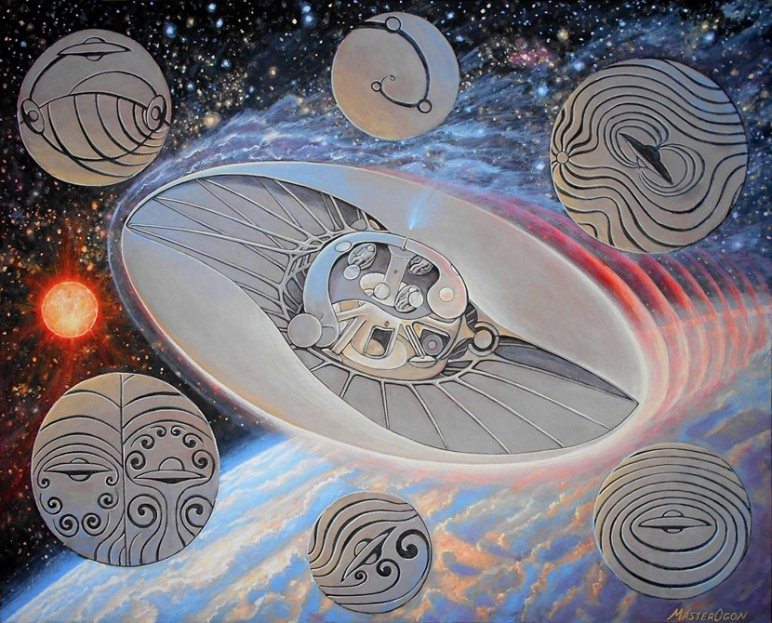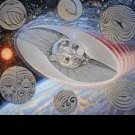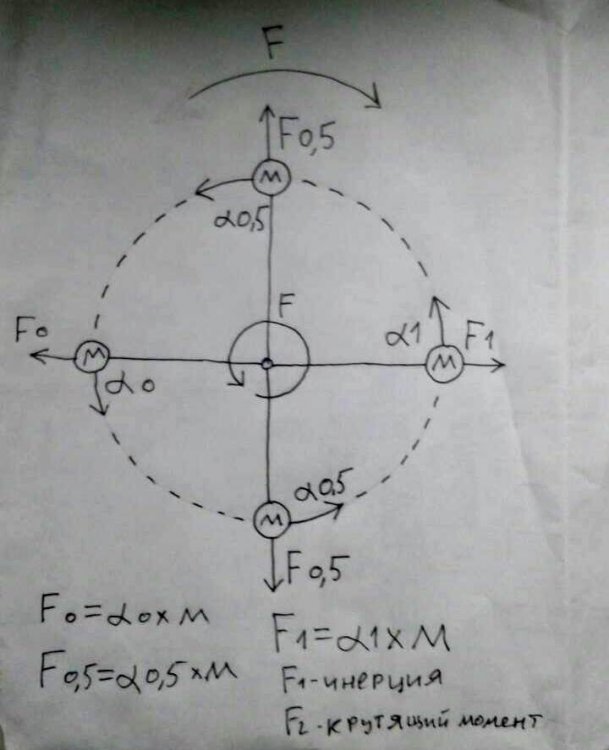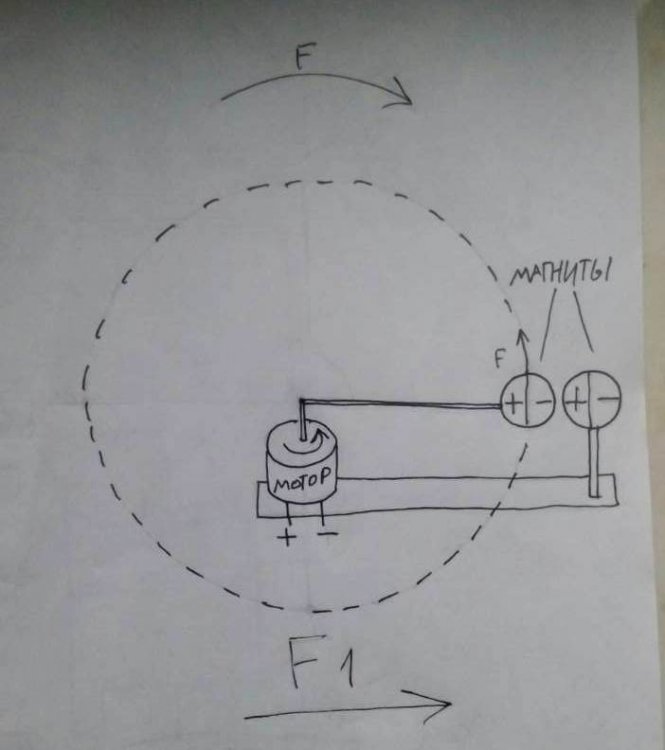-
Posts
68 -
Joined
-
Last visited
-
Days Won
1
Content Type
Profiles
Forums
Events
Posts posted by MasterOgon
-
-
9 minutes ago, Ghideon said:
Is this the same:? https://en.wikipedia.org/wiki/Reactionless_drive. If so, the article seems to supports my suspicion that the mechanism does not generate any lifting power:
Yes. It's just that in Russian Wikipedia there is a mathematical explanation of how this engine starts moving during an experiment. I brought him before the link. The experiments were conducted in such a way as to make interaction with the environment minimal. This was supposed to prove antigravity. But in all cases there was little interaction with the environment. Mathematics explains how it repels itself from the environment.19 minutes ago, Ghideon said:Of course the saucer you test is traveling in air. But why does that make a difference? Very simply put (I've limited time right now) the failing devices in the link above rocks an internal mass back and forth. Your version rocks an external mass (air, water or solar wind particles) back and forth. Please describe how thrust or lift is generated.
If you put your palm in the water and push the water one way quickly and the other slowly, the bulk will move to where you push it harder. You can spoon in the tea to chat.
Medusa, too, pushes the water quickly, and retracts slowly. Its complex form is simply more effective. The saucer should work much harder to get the same effect.35 minutes ago, Ghideon said:The formulas look garbled in my browser so I can't comment yet:
In any case, you can see how it works.
40 minutes ago, dimreepr said:sorry...
Nothing
0 -
I am sure that the parabolic antenna will work no worse than the antenna of the cables. But cables can also be attached.0
-
The wing can work as an electric sail antenna.
0 -
44 minutes ago, DrP said:
Then it can't work in space then can it, as there is no air.
I already wrote about this at the very beginning. In space, the wing works like a solar sail.0 -
I'm not trying to prove it because it’s already proven. I gave the link above.One more example. Dip your palm in the water and make a sharp movement, and then stop or take a slow motion back. You will feel the pressure of water, which will continue to move by inertia as a result of the first movement. This is the force that drives the ship on video.This is because the friction of peace is stronger than the friction of movement.If this system moves in water, then it can move in any other environment. Provided that she can interact with it. If this system moves in water, then it can move in any other environment. Provided that she can interact with it.Depending on the environment in which this occurs, and at what speed, vortices or waves are formed.0
-
6 hours ago, Ghideon said:
First: Why does the saucer not lift off the ground** when you just start the engine and do not throw the saucer? What are the limiting factors according to your model? (weight, rigidity, frequency...)
8 hours ago, MasterOgon said:The disadvantage of my design is that it shakes around a small magnet. But it is necessary that the light wing moves in one direction and the rest of the mass in the opposite direction.
This means that the ratio of the mass and power of my model is such that it will not be able to take off. This is the same as the screw from the ship to attach to the helicopter. The correct scheme, but giving a weak effect.6 hours ago, Ghideon said:Second: How can the lift, if any, be measured with equipment you have available?
Idea 1: Do you have a sensitive scale available? What happens if you run the engine in saucer while the saucer is placed on the scale? The scale should read less weight if the lifting force is generated? Then what does the scale read if you place the saucer upside down with engine running? The saucer should try to press itself down, increasing the reading. Problem here is that vibrations and any flow of air will affect measurements.
The fact is that the contact of the saucer with something either leads to the fact that it is repelled from it. And pure measurement is possible only if it is not in contact with each other. I tried to descend the thread, but the saucer is repelled by the thread.
In these videos:The only way is to drop it from a height and measure the speed of the fall. But this requires a great height and free space. There are differences in the video below. But the result was most likely influenced by the fact that the saucer was pushed away from my hand.6 hours ago, Ghideon said:Also, pictures above shows a device on water.
Idea 2: Do you expect the effect you want to use is greater when the resistance is provided by a medium with greater density? If so, how about building a submersible saucer? Then it may be possible to balance the buoyancy of the saucer so it is almost neutral. Place saucer at the bottom, just heavy enough to sink, with engine running. Does it move up? Then do the opposite: reduce weight so the saucer floats, turn it upside down and start engine. Will it dive to the bottom?
This setup has other issues, for instance that water is not compressible.You can create a scuba saucer to see his work, but it does not make sense. The work of such an engine in the environment has long been described by mathematics.
According to the law of conservation of momentum, m Δ v = F Δ t {\ displaystyle m \ Delta v = F \ Delta t} {\ displaystyle m \ Delta v = F \ Delta t}, where m {\ displaystyle m} m is the weight of the sink with spring on the inercoid, Δ v {\ displaystyle \ Delta v} \ Delta v - their acquired speed, F {\ displaystyle F} F - force to accelerate the weight on the spring, according to the third Newton law, equal to the force of the weight on the inercoid, Δ t {\ displaystyle \ Delta t} \ Delta t is the time it takes for the weight to accelerate on the spring in one direction. If the magnitude of the impulse m Δ v {\ displaystyle m \ Delta v} {\ displaystyle m \ Delta v} is equal in absolute value for the forward and reverse direction of acceleration of the weight, then F {\ displaystyle F} F is greater in absolute value than Δ t {\ displaystyle \ Delta t} \ Delta t is smaller. When accelerating a weight in one direction with a large Δ t {\ displaystyle \ Delta t} \ Delta t, the force F {\ displaystyle F} F is less than the friction force at rest, while accelerating the weight in the other direction, the force F {\ displaystyle F} F is greater than the friction force rest and friction force of movement and the model is set in motionBy this I am not trying to prove that this is possible in principle. I just want to show that it can be more effective if improved.
By this I am not trying to prove that this is possible in principle. I just want to show that it can be more effective if improved.
Another explanation. My model creates an uneven lifting force. On the water, her work looks like this:The following video saucer has unstable aerodynamics. In most cases, it raises the front part up or down.
If I throw it at the right angle, when the free-flowing overturning force is small, the force created by the operation of the wing stabilizes the flight.
And the saucer flies smoothly, with the front part tilted down, which is impossible without the engine running. Flying without an engine with such an angle of attack leads to the fact that the saucer flies down along the arc-like taektorii.One more example. The engine on the video is very small, it can not be taken into account. Look at what happens after I give the saucer a vertical acceleration. In some cases, it does not fall down, but flies away with good acceleration. This will not be able to repeat the plane, if you throw it up.
This happens because the whirlwind, which is formed due to the fact that I pull the saucer up, remains after I let it go. Saucer gliding on it, like a surfer on a wave:0 -
4 hours ago, MasterOgon said:2 hours ago, Ghideon said:
Your saucer uses inertial propulsion, and inertial propulsion has already ben sent to space and failed? How will your version work?
It does not work as angravity.
4 hours ago, MasterOgon said:The peculiarity of this engine is that it can repel almost everything that offers resistance. Therefore, if the solar wind resists, then the engine can push off from it. If you set a sail on it.
It works like a spring.
2 hours ago, Ghideon said:I can hear the sound but I see no lift at all. I suppose someone off-camera throws the saucer? How does the results compare to a set of experiments without the engine running?
I think it is obvious that I am throwing a saucer. The disadvantage of my design is that it shakes around a small magnet. But it is necessary that the light wing moves in one direction and the rest of the mass in the opposite direction.
Therefore, the strength of the saucer is very small. It is almost none. But if it is thrown, the oncoming flow creates resistance and the effect becomes stronger.
The behavior of the saucer depends more on the angle at which I threw it than on the force of the engine. Therefore, I did not take control shots, faithfully nothing is clear.At this moment saucer at the end of the path slows down. And you can hear how the sound of the engine is changing due to the fact that the eccentric energy is redistributed:
Here you can see how the saucer lands more gently than one would expect:
Note that in the final stage, the force that overturns the saucer increases.
If you look carefully, I think you will notice. To make the experiment more precisely, I could not.0 -
I did not say that the effect would be huge. It will be larger than that of an ordinary photon sail. It needs to be improved for a long time.0
-
10 minutes ago, DrP said:
It means that you were stating the obvious when you said it wouldn't produce antigravity and that your comment was superfluous. I was being sarcastic.
So how does this suppose to work in space? I think we will need to look to more modern and technologically superior ideas for propulsion through space.
I'm no expert though - Maybe I am wrong and this is the future of space travel. If it is then I am definitely missing something.
In the photo is the motor that I used in the experiment. If we place it in In the photo is the motor that I used in the experiment. If we place it in weightlessness and vacuum, it jerks in place around its center of mass.
If this jerking is resisted, it will be set in motion. In space, this resistance can be obtained by attaching a solar sail to the motor. he photo is the motor that I used in the experiment. If we place it inNaturally, this is not the final version of the motor, in order to work in space. It only captures the essence.
Its advantage is that it can work in any environment that offers resistance. A saucer-shaped wing can play the role of a photon sail and an electronic sail antenna. This all together gives versatility - the ability to move in any environment using almost the same principle. With varying success, of course.
You can watch him as anti-gavitational when he jumps.)))
And here you can hear the acoustic waves that create lift.
0 -
11 minutes ago, DrP said:15 minutes ago, MasterOgon said:
his mechanism does not create angravity
You don't say.
Извините, не понял вопрос.
Here you can see how it works in the water. Powerful waves go forward and weak backwards.
7 minutes ago, DrP said:So how do you drive the saucer in the first place?
As a universal vehicle. I can misunderstand the question.
0 -
14 minutes ago, Ghideon said:
Thanks for your answer. I do not quite understand how a the smooth and complex movement of a bird wing is comparable to a rigid* saucer. When the saucer makes a quick movement of the wing up, the force required to move the air above the saucer results in a force that presses the saucer towards the ground.
Yes. But after that, when the saucer stops moving, the whirlwind that it created, by inertia, continues for some time and pushes the saucer. If the balloon, inflated with air, is pushed upward, then the airflow created by this movement will push it further for some time. This can be checked on a sheet of paper, a plastic bag, and anything.
17 minutes ago, Ghideon said:How will the saucer you propose be able to behave differently than the car above?
The car makes the same impulses up and down. And should create a shock wave up and smoothly lower the wing down
0 -
7 minutes ago, DrP said:
I thought saucers were for the ion lift type drives... maybe I'm wrong.
What is the proposed drive mechanism again? - Surely not that thing in the vid, lol. It certainly isn't going to power a saucer to fly... and I am not sure WHO would consider that contraption in the vid an 'antigravity' device.
This mechanism does not create angravity. He twitches in one place. One way quickly and the other way slowly. Due to this, it pushes off like a spring from everything that gives it resistance.
10 minutes ago, swansont said:This being science, though, you should be able to quantify things. The solar wind is not very robust. If we look at the EM component, the solar irradiance near the earth is less than 1.4 kW/m^2. You can double the force by having the radiation reflect, so effectively it's like ~3 kW, or one thousandth of the number I gave earlier. 1 mN of thrust per m^2 for a solar sail.
That's not very much to push against.
I understand. But if it works then this is something.
0 -
The inertial propulsion https://youtu.be/pcEdpb-rIX4?t=335 was considered by many to be antigravity, because during the experiments it seemed that it did not repel anything. In the end, it was even launched into space. And there it did not work.
The peculiarity of this engine is that it can repel almost everything that offers resistance. Therefore, if the solar wind resists, then the engine can push off from it. If you set a sail on it.
The disadvantage of this engine in the mechanical design, which does not allow to develop more power and be effective. But if you use electromagnets instead of mechanics, you can get a better result.0 -
5 hours ago, Ghideon said:
hanks, I don't think that was obvious from your description above.
If you look at the bird from the front or the fish from above, there are similarities. Flying saucer, like a bird, makes a sharp movement of the wing up and slowly lowers the wing down. Having made a sharp movement of the wing up, the bird creates a whirlwind. Slowly lowering the wing, the bird detaches from it. It is drawn on the picture . If you observe a jellyfish, it makes more complex movements, but the meaning is the same. I can't mathematically confirm this because I am not an expert. On a simplified model, it looks like this:
2 hours ago, quiet said:You seem like a well-informed person about flying saucers. What can you comment about the Nazi Bell?
I don't know anything new about it. If they use the principle I’m talking about, I don’t think that the Nazis were able to build such а flying saucer. I think the curved shape of a bell or a saucer makes sense to increase its effectiveness, but it can be flat.
The first flying saucer is an umbrella plane that jumped on the ground.0 -
40 minutes ago, swansont said:
That sounds like a bunch of word salad.
"high-frequency electromagnetic inertial propulsion" is just radiation pressure, which is incredibly weak. F = P/c
You need to be emitting 300 MW to give you 1 N of thrust.
How does that work in the vacuum of space, where there is essentially no resistance to movement?
Thank. And how to write: an engine that creates an impulse of inertia?
The space environment is not a vacuum. There is a photo and electric sail to perceive the resistance of the space environment.
41 minutes ago, Ghideon said:Hello @MasterOgon.
Is something missing from the description? I've highlighted two statements; they seem to contradict each other? (emphasis by me)
How does this work in the vacuum of space?
0 -
PRINCIPLE OF FLYING SAUCER.
Flying saucer is a reusable air / underwater / spacecraft. The motor used on it is a movable discoid sail, driven by high-frequency electromagnetic inertial propulsion. With the help of the wing, the inertial propulsion perceives the resistance of the environment and the apparatus comes in forward motion. Thus, the flying saucer uses the principle of movement of birds, fish and other species of creatures moving in a homogeneous environment. This principle is possible in virtually any environment capable of providing resistance in which waves can be created and reflected. This allows you to effectively use the resistance of the environment due to its inertness.
For example, an airplane for the most part simply overcomes air resistance, leaving behind it an air whirlwind that lasts some time by inertia. The vortex contains energy that is not used at all. A bird creating a whirlwind with a wing wave receives back some of the energy spent on it in the form of wind, which pushes it. Thus, the bird is more efficient than the aircraft. But it is technically difficult to create a powerful and fast apparatus in the form of a bird or fish. Such designs have a large number of moving parts that do not withstand the load on friction and vibration, if you install a powerful engine on them. Unlike the ornithopter wing, the wing of the flying saucer will be able to vibrate with high frequency and low amplitude, like the membrane of an acoustic speaker. This can be achieved through the use in the design of the electromagnetic drive of the wing. The suspension of the wing on a magnetic cushion will allow you to realize greater power and frequency of oscillation with a low mechanical load.
The work of the wing in the air or water can be described as follows. The wing makes a fast ascending impulse, as a result of which a shock wave is formed above it, and the flying saucer begins to be drawn into the region of reduced pressure formed behind it. An annular vortex is formed under the wing, which follows it by inertia. Then the wing begins to make a reverse movement downward at low speed, and the flying saucer pushes off from the whirlwind, which catches up with it, carrying it upwards.
0 -

Principle, scheme, images of a flying saucer. Reusable spaceship of the future. Spaceship with a solar sail.
http://new-original-style.com.ua/pages/article/flying/saucer_en.htm
0





Flying saucer. Picture, project of a spacecraft
in Speculations
Posted
Based on the rule that the friction of calm is stronger than the friction of movement, the following is obtained. The saucer's rapid movement up is the friction of movement, and the slow movement back is the friction of relative calm. Heading up the saucer punches the air like a bullet, and heading back, it holds like a parachute.
A whirlwind created by fast motion is like a flywheel. It continues to rotate and creates wind directed at the bottom of the saucer, pushing it.
Slow backward movement, too, creates a whirlwind with opposite force, but it is much weaker.
If we consider this process as a wave, then a standing wave is formed around the saucer. By creating waves in opposite directions, the saucer does the same as the acoustic levitation.